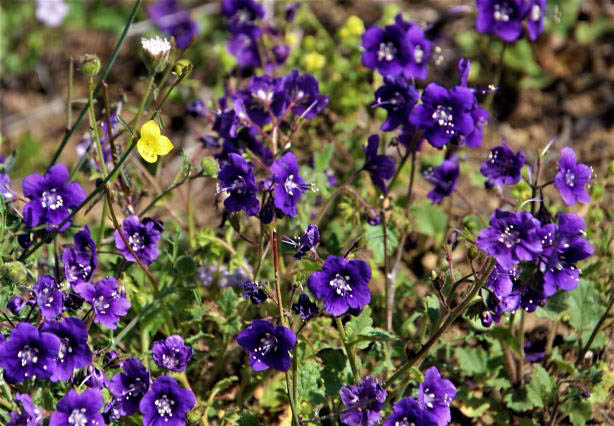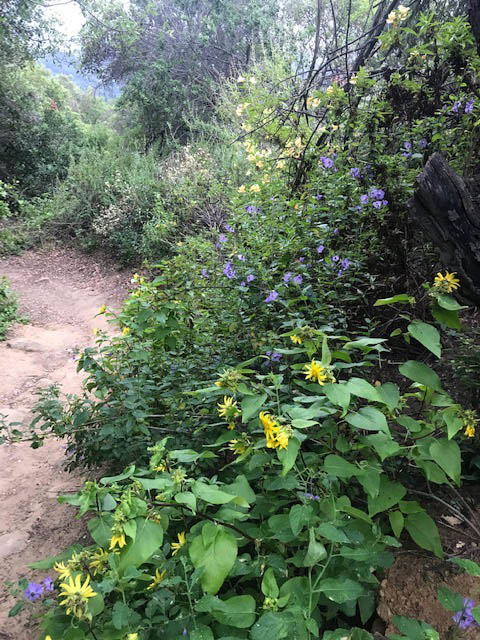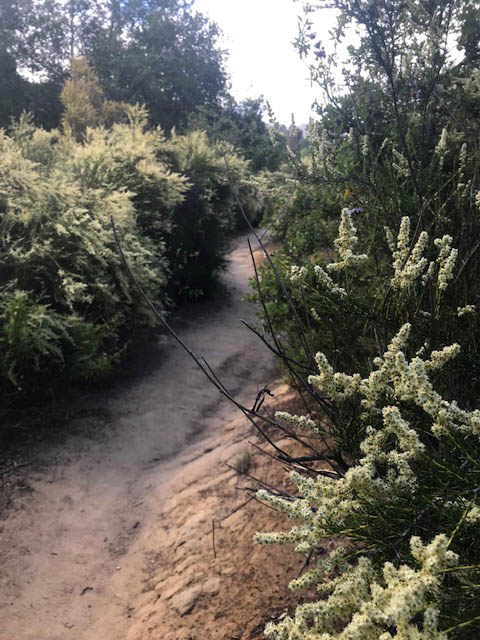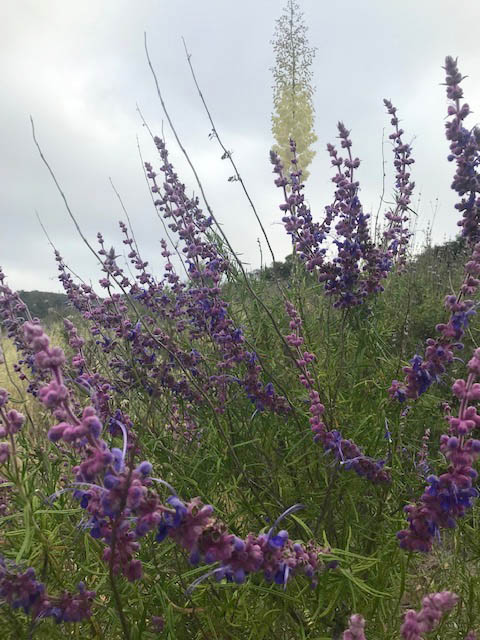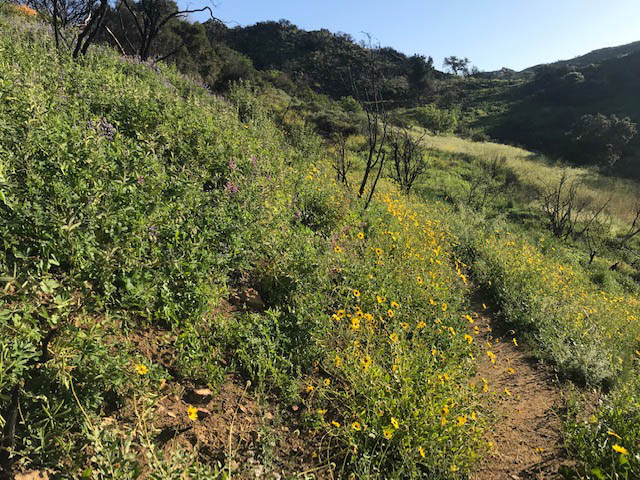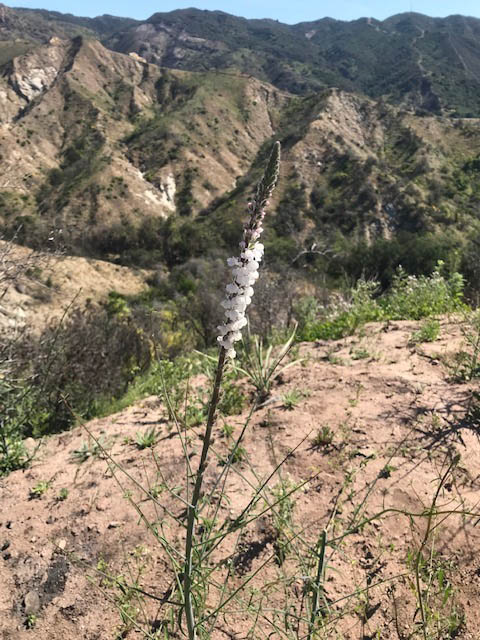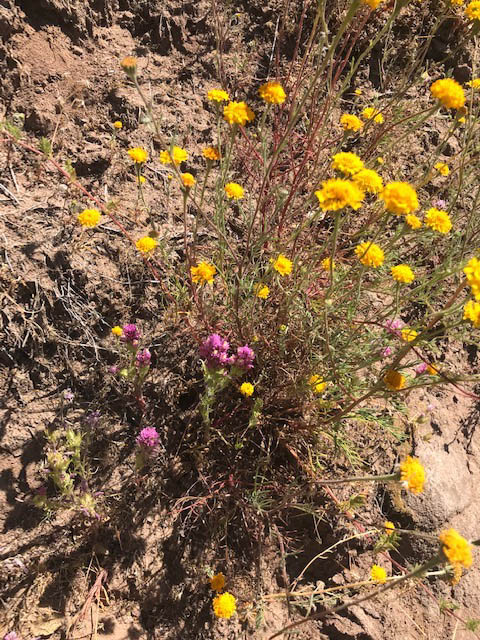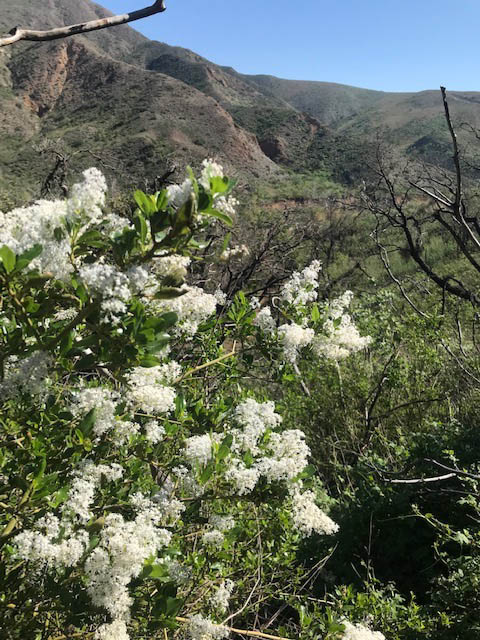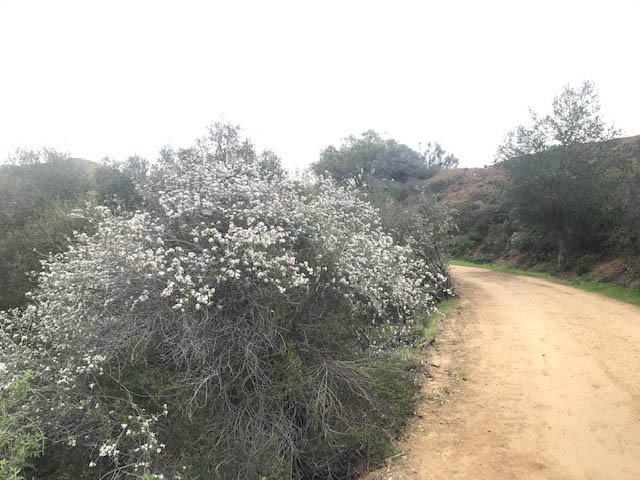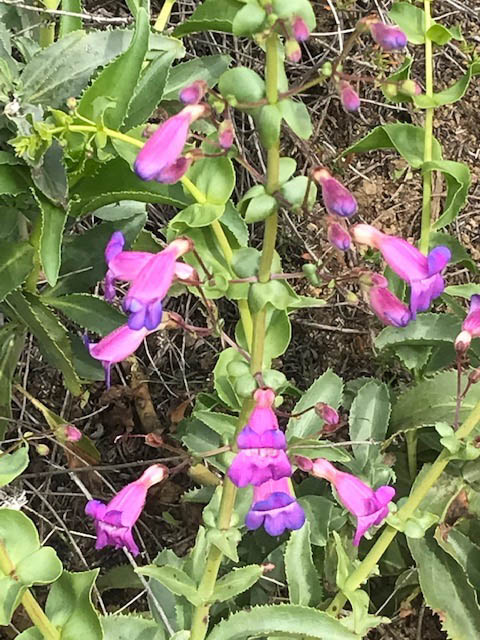
|
Available Reviews
Santa Ynez Canyon Nicholas Flat Topanga State Park Point Mugu State Park Zuma Canyon |
Date of Review
05/05 & 03/24. 04/24. 04/20 & 04/05 & 03/17 & 02/01. 03/24 03/04. 02/16. |
|
| ||
|
This site performs a public service that anyone can participate in. Let us all know what you are seeing! If you are new to submitting a report (or maybe even an old hand at it) be sure and read How To Submit a Flower Report — ed. |
Contact Information:
|
Santa Monica Mountains NRA 401 West Hillcrest Drive Thousand Oaks, CA 91360 805-370-2301 www.nps.gov/samo |
If you would like to contribute a wildflower report you can e-mail the editor at: SMMWildFlowers@gmail.com |
|
What's Blooming
on the web at
www.smmflowers.org/whatsblooming
or go to
www.nps.gov/samo
click on
"Plan Your Visit" > "Things to Do" > "Look for Wildflowers"




